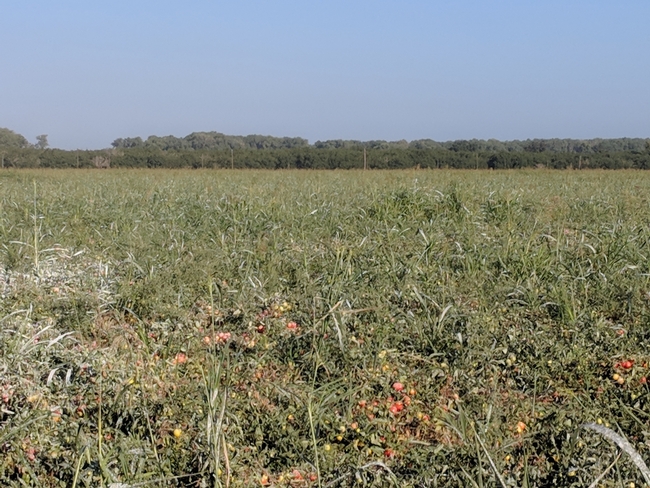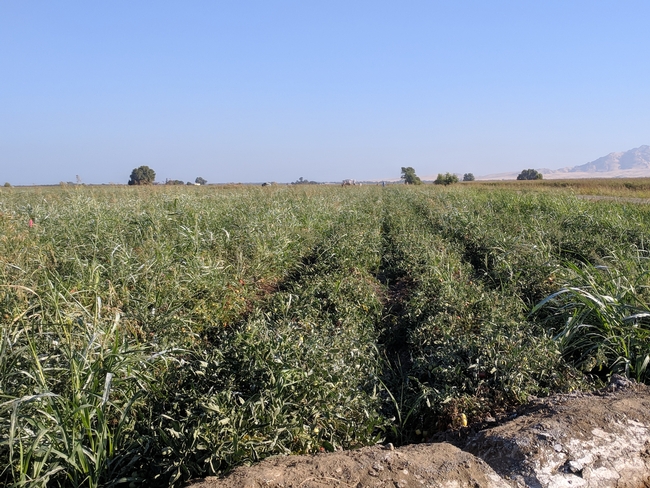In 2019, my colleague Sarah Light (UCCE Agronomy Advisor: Sutter-Yuba and Colusa counties) and myself were in Year 2 of a Healthy Soils Demonstration Project in Sutter County, CA. Our field site was planted to tomatoes and was in it's first year of certified organic production. The previous year, wheat was harvested, and then a vetch cover crop was planted over the winter. Unfortunately, in addition to the processing tomato crop, there was a significant infestation of johnsongrass. This caused significant yield loss in certain areas of the tomato field, likely up to 5 tons/acre.
Fast forward to 2020, and the field is planted to rice instead of corn as originally planned so the grower can better manage the johnsongrass.
Johnsongrass is a perennial grass that is very difficult to manage, even in conventional fields. Because it establishes itself very quickly, and develops an extensive rhizome, it is competitive with crop plants for water and nutrients. Similar in appearance to corn seedlings when young, johnsongrass can be differentiated by its oval-shaped, dark colored seed that remains attached when the seedling is pulled from the soil. It blooms from May-October in California and reproduces by seed and the underground rhizome. It can reach up to 8 feet tall when mature (UC-IPM).
To manage johnsongrass, a multi-year integrated approach is usually required. The first step is preventing and controlling seed entering the field, cleaning equipment to prevent spread, and reducing the existing seed bank. Managing seedlings before rhizomes form or the plant produces seeds is key in addition to diminishing energy stores for existing rhizomes. For organic management, hand-weeding is only effective when plants are young and the entire plant must be removed without breaking (including the rhizome). Repeated mowing can suppress but not eliminate johnsongrass when used as a standalone management strategy because it does not disrupt the underground growth. Disking followed by mowing or herbicide spraying may help decrease infestations if done yearly. If tillage is done early, repeated tillage, cultivation, mowing or repeated herbicide applications will be necessary to control new seedlings. After harvest, tillage and fallowing helps weaken or kill rhizomes by drying them out (Ceseski et al. 2017).
In conventional management, an herbicide program with various modes of action can be effective if the rhizomes are killed. Preemergent and preplant-incorporated herbicides can help control seedlings and prevent reseeding, but won't affect rhizomes, which require the use of systemic postemergent herbicides. These are most effective after flowering. Tillage before planting to break rhizomes, followed by a light irrigation to encourage weed emergence, then mowing followed by postemergent herbicide applications on growing plants can significantly reduce the competitiveness of johnsongrass to the annual crop. After planting, any emerging johnsongrass can be managed with cultivation and spot/banded chemical applications (Ceseski et al. 2017).
For more information on johnsongrass, please refer to the resources below.
References:
UC-IPM. Weed Gallery. Grass Family: Poaceae. Johnsongrass.
Ceseski, A., K. Al-Khatib, and J. A. Dahlberg. “Biology and Management of Johnsongrass (Sorghum halepense)”. ANR Publication 8569. February 2017.


